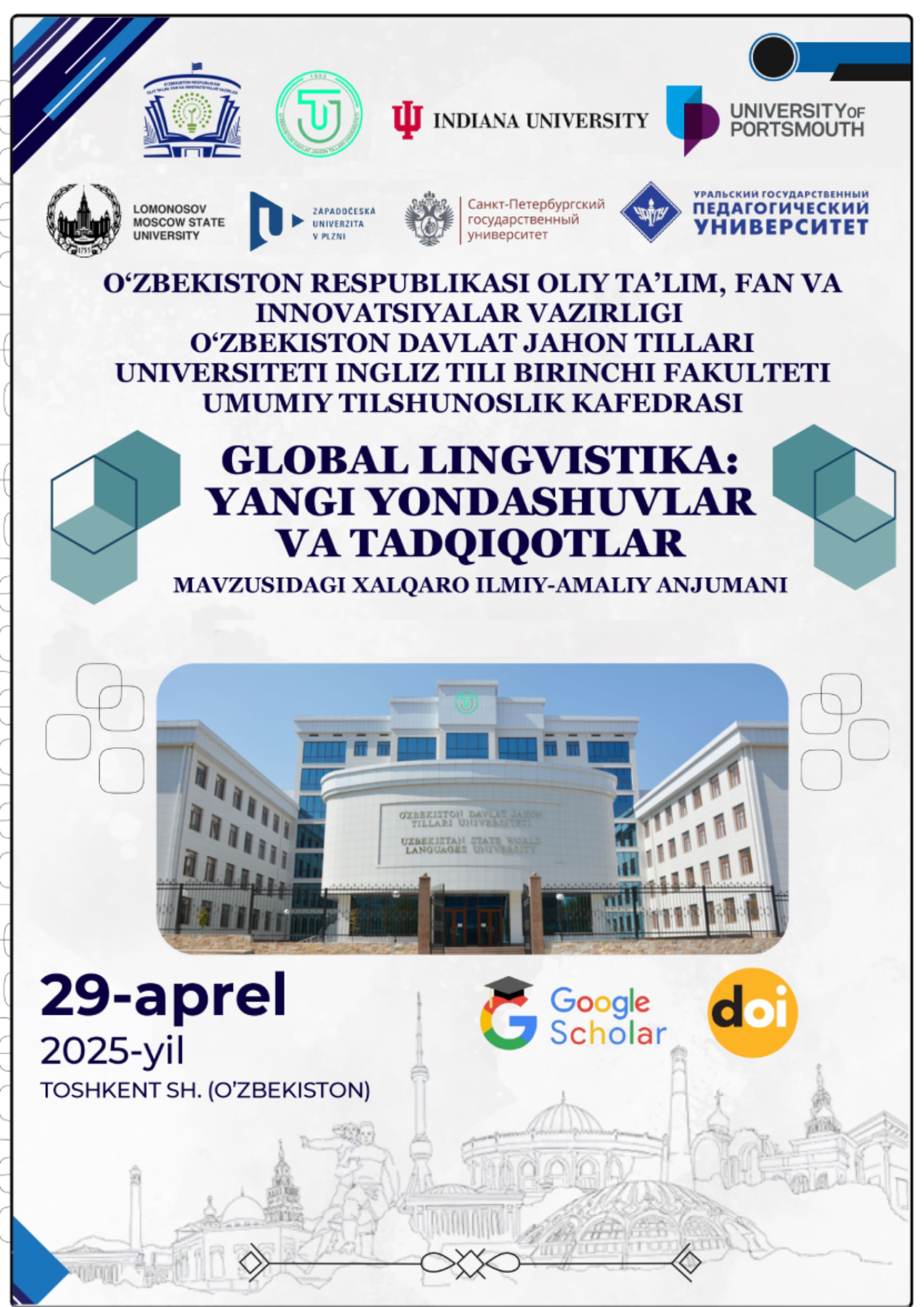THE CORRELATION BETWEEN COGNITIVE LINGUISTICS AND PSYCHOLINGUISTICS
https://doi.org/10.5281/zenodo.15438241
Kalit so‘zlar
Cognitive linguistics, cognitive science, psycholinguistics, systemic functional linguistics, conceptual metaphor, language processing, human cognition, construction grammar, language acquisition, multidisciplinary linguistics, cognitive semantics, cognitive psychology, linguistic representation.Annotasiya
This study provides a comprehensive overview of Cognitive Linguistics (CL) as a dynamic and evolving paradigm within modern linguistic inquiry. Originating as a counter-response to transformational generative grammar, Cognitive linguistics emerged through the convergence of the second generation of cognitive science and experiential philosophy, flourishing from the late 1980s onwards. Positioned at the intersection of linguistics, cognitive psychology, artificial intelligence, and systems theory, Cognitive linguistics focuses on the fundamental premise that language generation, acquisition, and usage are grounded in human cognition. The article contrasts Cognitive linguistics with systemic functional linguistics and psycholinguistics, emphasizing its focus on internal cognitive mechanisms and meaning-making processes. Through the works of prominent Western scholars such as G. Lakoff, M. Johnson, and R. Langacker, and regional researchers in Uzbek linguistics, the field demonstrates a profound interconnection between linguistic structure and human perception. Key developments such as conceptual metaphor theory, categorization, cognitive semantics, and construction grammar are explored, alongside the discipline’s increasing integration with neurolinguistics, sociolinguistics, and educational linguistics. The article also highlights the shift toward empirical, quantitative, and socially oriented methodologies, as well as the application of cognitive theories to second language acquisition and pedagogy. Ultimately, this thesis affirms the centrality of cognition in linguistic theory, marking cognitive linguistics as a multidisciplinary and transdisciplinary field with expanding influence and practical relevance.
Foydalanilgan adabiyotlar ro‘yhati
Berwick, R. C., & Weinberg, A. S. (1983). The role of grammars in models of language use. Cognition, 13(1), 1–61. https://doi.org/10.1016/0010-0277(83)90002-1
Bever, T. G., Garrett, M. F., & Hurtig, R. (1973). The interaction of perceptual processes and ambiguous sentences. Memory & Cognition, 1, 277–286. https://doi.org/10.3758/BF03198109
Chomsky, N. (1965). Aspects of the theory of syntax. MIT Press.
Dancygier, B. (Ed.). (2017). Methodological Approaches. In The Cambridge Handbook of Cognitive Linguistics (pp. 491–622). part, Cambridge: Cambridge University Press
Fodor, J. A., Bever, T. G., & Garrett, M. F. (1974). The psychology of language: An introduction to psycholinguistics and generative grammar. McGraw-Hill.
Levelt, W. J. M. (2012). A history of psycholinguistics: The pre-Chomskyan era. Oxford University Press. https://doi.org/10.1093/acprof:oso/9780199653669.001.0001
Tomasello, M. (2003). Constructing a language: A usage-based theory of language acquisition. Harvard University Press.
Yao, Y., & Su, Q. (2021). Book review: The Routledge handbook of cognitive linguistics (1st ed.). Frontiers in Psychology, 12, 697145. https://doi.org/10.3389/fpsyg.2021.697145

